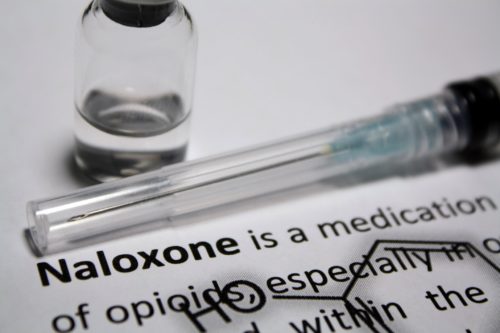Read the latest and greatest from our team
of incredible specialists.

Beach House Recovery Center » Blog » How Does Naloxone Work?
The opioid abuse epidemic has been widespread in its effect on American citizens in recent years, with an estimated 2.1 million people aged twelve and older having a diagnosed opiate use disorder (OUD) in 2017, according to data collected by the National Survey on Drug Use and Health (NSDUH). If you or someone you love has been affected by opiate addiction, you may have heard of Naloxone. But how does Naloxone work? Naloxone is a drug that helps to temporarily counteract an opiate overdose and has been in use in the medical community for counteracting opiate overdoses since the 1970s. In recent years, additional forms of Naloxone have been developed and released that have made it easy to administer without any prior medical knowledge or training, which can be extremely useful for the friends and families of users that are seeking inpatient addiction treatment.

Naloxone works to counteract the effects of an opiate overdose by binding to the opiate receptors in the brain in the place of the opiates that the user has taken. When Naloxone binds to the opiate receptors in the brain, it does not flood the brain with dopamine as an opiate drug would. Naloxone effectively binds to the opiate receptors in the brain to prevent opiate drugs from binding there, which is how it can temporarily reverse an overdose. Within two to five minutes of Naloxone being administered, it can become effective at preventing opiate drugs from binding to the opiate receptors in the brain. While Naloxone can be extremely effective in temporarily counteracting opiate overdoses, if a user has taken narcotics in addition to other drugs, such as stimulants or alcohol, it may be more difficult for Naloxone to effectively counteract the overdose.
There are several different forms of Naloxone that have been approved by the Food and Drug Administration (FDA). Below is an overview of each of the three forms of Naloxone and the scenario in which they are intended for use.
While Naloxone is completely safe for use in most people, some individuals can experience side effects or unwanted symptoms when Naloxone is taken. Some of the below side effects are due to the beginning stages of opiate withdrawal due to the Naloxone replacing opiate drugs on the brain’s receptors. Below are the most common side effects of Naloxone:
In some rare cases, an individual may experience an allergic reaction to Naloxone. Signs of a potential allergic reaction can include difficulty breathing, hives, and swelling of the face, lips, tongue, or throat.
In its Naloxone nasal spray and auto-injectable forms, this medicine can be administered by a caregiver, friend, or family member if a user is experiencing an opiate overdose. However, emergency medical services must always be called in addition to administering Naloxone. Due to its short half-life, the effects of Naloxone are temporary and further medical treatment by medical professionals will be required to treat an opiate overdose.
If you or a loved one is abusing opiates and are ready to get help, our addiction treatment center is here for you. Give our Florida rehab center a call today to get the treatment you deserve.
Sources:
Whether you’re researching for yourself or a loved one, Beach House can help. We understand that this is a serious time in your life and that the treatment center you choose matters. We want you to feel comfortable and empowered to make the right decision for yourself, a friend, or a family member. This is why a counselor is waiting and available to answer your questions and help put your mind at ease regarding the next steps. Many of the staff at Beach House have walked in your shoes. If you feel you’re ready or want more information about how to help a loved one, we can help today. You can also learn why we are voted the #1 rehab for addiction treatment in Florida.
We accept most major insurance plans and can verify your benefits quickly and confidentially.
We’re committed to helping you access the care you need, our admissions counselors can guide you through your coverage options and available resources.





"*" indicates required fields